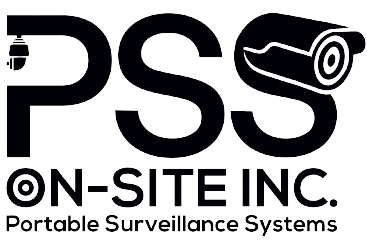In the fast-paced world of business, safeguarding assets and information is paramount. Surveillance services play a pivotal role in ensuring the security and success of B2B enterprises. This article delves into the essential surveillance services that every B2B business should consider integrating into its operations.
Understanding Surveillance Services
Surveillance services encompass a range of techniques and technologies aimed at monitoring and protecting assets, data, and personnel. These services can be broadly categorized into physical security, cybersecurity, and data surveillance.
Physical Security Surveillance
Physical security forms the foundation of any comprehensive surveillance strategy for B2B businesses. It involves the deployment of measures to safeguard tangible assets and premises from unauthorized access and threats. Key components of physical security surveillance include access control systems, CCTV cameras, and alarm systems.
Access control systems regulate entry and exit points, ensuring that only authorized individuals can access sensitive areas within the premises. CCTV cameras provide real-time monitoring and recording of activities, serving as a deterrent to potential intruders and enabling swift response to security incidents. Alarm systems alert personnel to unauthorized access attempts or breaches, allowing for immediate action to be taken.
Integrating these components into a cohesive physical security framework is essential for maintaining a secure environment for employees, customers, and assets.
Cybersecurity Surveillance
In an increasingly digitized business landscape, cybersecurity surveillance is critical for safeguarding against cyber threats and attacks. This involves monitoring networks, systems, and applications for suspicious activities or anomalies that may indicate a security breach.
Tools and technologies such as intrusion detection systems (IDS), security information and event management (SIEM) systems, and network traffic analysis tools are utilized to detect and respond to cyber threats in real-time. Proactive monitoring and analysis of security events enable businesses to identify and mitigate potential risks before they escalate into major security incidents.
Data Surveillance
Data surveillance focuses on monitoring and protecting sensitive information from unauthorized access, disclosure, or tampering. This includes implementing measures such as data loss prevention (DLP) solutions, user activity monitoring, and encryption technologies to safeguard confidential data.
DLP solutions help prevent unauthorized data exfiltration or leakage by monitoring and controlling the flow of data within the organization. User activity monitoring tracks and logs user interactions with data and systems, allowing for auditing and analysis of user behavior. Encryption technologies protect data both in transit and at rest, ensuring that it remains secure even if accessed by unauthorized parties.
Benefits of Comprehensive Surveillance Services
Comprehensive surveillance services offer numerous benefits to B2B businesses, including enhancing security posture, mitigating risks and vulnerabilities, improving operational efficiency, and ensuring regulatory compliance. By proactively monitoring and protecting assets, data, and personnel, businesses can minimize the likelihood of security incidents and their associated impacts.
Selecting Surveillance Services for Your B2B Business
When selecting surveillance services for your B2B business, it is essential to assess your specific security needs, evaluate service providers, consider customization options, and factor in cost considerations. By carefully considering these factors, you can choose surveillance services that align with your business objectives and budgetary constraints.
Implementing Surveillance Services
The successful implementation of surveillance services requires careful planning, installation, employee training, and ongoing maintenance. By following a structured approach and involving key stakeholders throughout the process, businesses can ensure the effective deployment and operation of surveillance systems.
Overcoming Challenges in Surveillance Services
While surveillance services offer significant benefits, they also present challenges such as addressing privacy concerns, dealing with technological limitations, managing integration complexities, and handling false alarms and alerts. By proactively addressing these challenges, businesses can maximize the effectiveness of their surveillance efforts while minimizing potential drawbacks.
Future Trends in Surveillance Services
Looking ahead, advancements in artificial intelligence and machine learning, integration with Internet of Things (IoT) devices, emphasis on predictive analytics, and enhanced focus on privacy-preserving technologies are expected to shape the future of surveillance services. By staying abreast of these trends, businesses can adapt and innovate their surveillance strategies to meet evolving security needs.
Case Studies: Successful Implementation of Surveillance Services
Real-world case studies provide valuable insights into the successful implementation of surveillance services in B2B environments. By examining the experiences of companies like XYZ Corporation and ABC Industries, businesses can learn from their successes and apply best practices to their own surveillance initiatives.
Conclusion
In conclusion, surveillance services are indispensable for ensuring the security and success of B2B businesses in today’s competitive landscape. By understanding the various types of surveillance services available, selecting the right solutions, and implementing them effectively, businesses can safeguard their assets, data, and personnel while staying ahead of emerging threats and challenges.
For More Great Updates, Keep Visiting Pssonsite.
